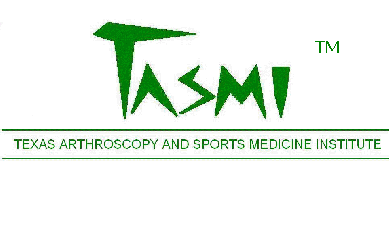|
| |
Knee Research
 | Interobserver Variability of the Insall-Salvati
Ratio. This clinical investigation, published in the journal Orthopedics in
2003, revealed that a traditional technique used in the measurement of
knee X-ray films was more reliable than a newer technique in analyzing the
position of the patella (knee cap) in relation to the rest of the knee joint.
|
 | Quadriceps Tendon Impingement from Femoral
Interference Screw: A Case Report. This clinical report, published in the
journal, Arthroscopy, in 2003, shares with the world a hitherto
unreported complication of anterior cruciate ligament (ACL) reconstruction. A
patient came to see Dr. Ilahi for persistent pain and stiffness following ACL
reconstruction done elsewhere. The patient's original surgeon was at a loss to
explain this. Dr. Ilahi's investigation revealed that a screw-type device used to secure
the ligament reconstruction was protruding from the femur (thigh bone) and
rubbing on the tendon of the quadriceps muscle, just above the knee. The
resulting pain was hampering rehabilitation, especially the ability of the
patient to regain knee joint flexion. In addition, the protruding screw was
actually leading to slow tearing of the tendon. After Dr. Ilahi surgically
removed the offending hardware and addressed the partially torn quadriceps
tendon by an outpatient arthroscopic procedure, full flexion of the knee joint
was quickly restored, and the patient's pain alleviated. |
 | Arthroscopic Findings in Knees Undergoing Proximal
Tibial Osteotomy.
A proximal tibial
osteotomy is a joint re-alignment procedure used to treat certain cases of
knee arthritis where the joint has worn out primarily in one region and is
associated with an abnormal alignment of the lower extremity. By correcting
the alignment of the lower extremity, the forces across the joint are
redistributed so the worn out area sees less force and the more healthy part
of the joint carries more force. This can result in many years of relief from
arthritic pain yet allow unrestricted activities, unlike knee replacement
procedures, which often require restriction from strenuous activities lest the
artificial components wear out prematurely. The osteotomy is open
surgery and does not involve the knee joint itself. In this clinical
investigation, published in early 2008 in the Journal of Knee Surgery, patients undergoing the
osteotomy also had arthroscopic evaluation of the knee joint and were found to
have a rather high and previously unknown incidence of correctable knee
problems in addition to arthritis. Correcting these arthroscopically at
the same time as the osteotomy may lead to better outcomes than performing the
osteotomy alone. Performing minimally invasive knee arthroscopy at the time
of the open osteotomy surgery was not found in this investigation to lead to
any increased complications. |
 | Intra-tunnel Fixation vs.
Extra-tunnel Fixation of Hamstring ACL Reconstruction. A Meta-analysis.
This investigation, published in 2009 in the Journal of Knee Surgery,
analyzed the results of numerous previous publications of ACL
reconstruction results using hamstring tendons to replace a torn ACL.
Specifically, two types of techniques for securing the hamstring tendon grafts
were compared to each other as well as to a more traditional approach of using
the patellar tendon to reconstruct the torn ACL. The traditional approach
works well, but has greater associated discomfort, making rehabilitation more
painful. Fortunately, the results of this investigation confirmed that the
less painful hamstring reconstruction can give comparable results, given
adequate fixation. |
 | Femoral Tunnel Length: Accessory Anteromedial
Portal Drilling Versus Transtibial Drilling. Recent investigations
have suggested that better functional results can be obtained by
reconstructing a torn anterior cruciate ligament (ACL) by creating a bone
tunnel in the femur (thigh bone) through a small skin incision (portal) rather
than the more traditional method of drilling through a tunnel in the tibia
(main shin bone). However, several investigations using human cadavers raised
concern that tunnels created through a portal could be too short to allow the
healing of the graft that is placed to function as a new ACL. This
investigation, published in early 2012 in the journal, Arthroscopy, was
the first to definitively show that femoral tunnels created through an
accessory anteromedial portal had a very low risk of creating femoral tunnels
so short as to cause worry about healing of the reconstruction graft. |
|
